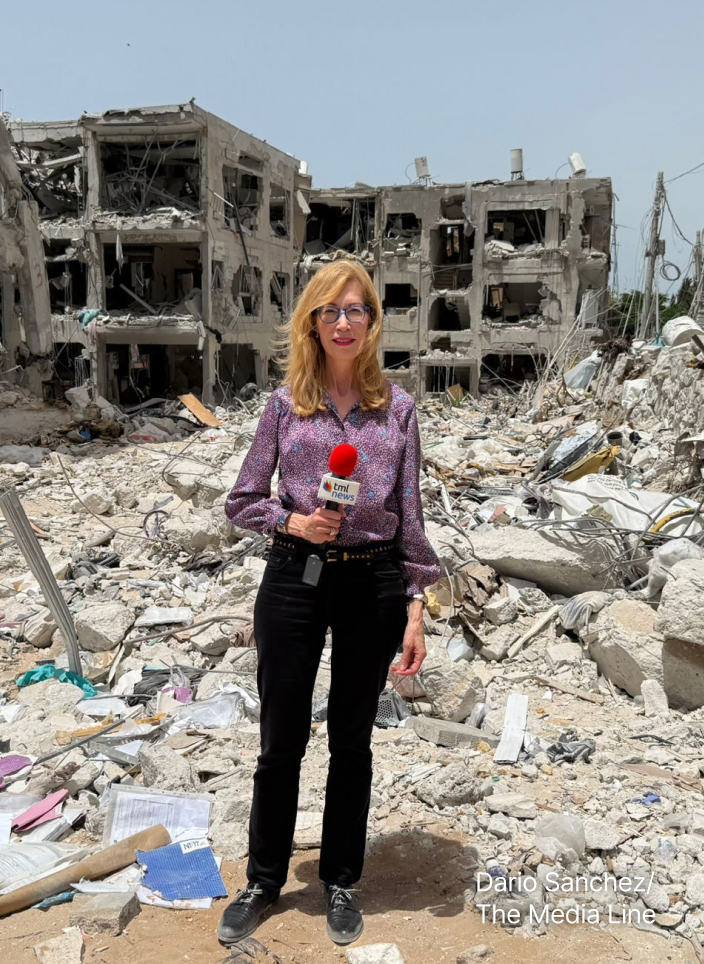Former Mossad Official Reveals Financial Lifelines Sustaining Hamas
Dr. Udi Levi, former head of Mossad’s Economic Warfare Division, warns that Hamas receives over $1 billion annually, questioning the efficacy of Israeli efforts to dismantle the group
Today, in a press conference, Dr. Udi Levi, former head of Mossad’s Economic Warfare Division, outlined how Hamas and other Islamist terror organizations secure financing. He estimated that Hamas receives over $1 billion annually and warned that without halting this financial flow, Israeli efforts to dismantle the group would be futile.
“In a few years,” he said, “we will find ourselves again with the same monster that we saw on October 7,” adding that “no country, Israel included, is investing enough efforts to prevent the money flow to Islamist terror organizations.”
Levi then delved into the specific sources of Hamas’ financing.
Firstly, he emphasized that financing from both Qatar and Iran is critical for sustaining Hamas. However, he stressed that Qatar is the main source, surpassing even Iran.
“The world has to understand that Qatar is the head of the snake today to finance radical elements all over the world,” he said.
Citing his research, Levi stated that Qatar’s involvement can be traced in most global Islamic terror attacks since 9/11. For instance, he pointed to Qatar’s funding of the Osbat al-Ansar movement in Syria and cited evidence presented by Syrian citizens in American and British courts. He also cited attacks on Egypt’s Coptic Church and the 2015 terror attack in Paris as examples.
“The Qataris invented the idea of the ransom payments,” added Levi, explaining that billions of dollars are transferred through that system to terror organizations around the globe.
Continuing, he noted that Qatar “has, since 2015, bought the world, and it is very difficult to do something against them today.” He reiterated that over $1.5 billion flows directly from Doha to Hamas.
Give the gift of hope
We practice what we preach:
accurate, fearless journalism. But we can't do it alone.
- On the ground in Gaza, Syria, Israel, Egypt, Pakistan, and more
- Our program trained more than 100 journalists
- Calling out fake news and reporting real facts
- On the ground in Gaza, Syria, Israel, Egypt, Pakistan, and more
- Our program trained more than 100 journalists
- Calling out fake news and reporting real facts
Join us.
Support The Media Line. Save democracy.


Subsequently, Levi identified Iranian funding as the second most critical revenue stream for Hamas. He underscored the absurdity that despite nearly 15 years of sanctions, Iran continues both its nuclear program and financial support for its proxy groups.
He asserted that sanctions against Iran are not effectively enforced. He said that American, European, and Emirati banks circumvent the sanctions, and he claimed that Iran is almost free to move money as it pleases.
Levi also credited Iran’s financial resilience to both drug and counterfeit pharmaceutical trafficking. This, he noted, serves dual purposes: destabilizing Sunni Muslim regimes like Jordan and Saudi Arabia, and generating revenue. He told the reporters that only last year, Iran made over $30 billion from dealing in drugs and fake pharmaceuticals.
Additionally, Levi mentioned that Hamas operates an investment company active throughout the Middle East and the Muslim world. He says that it allows Hamas to earn hundreds of millions of dollars yearly.
Beyond the methods already mentioned, Levi said that Hamas also raises funds the “old-fashioned way”—through donations. He notes that NGOs in Europe collect money for Hamas freely. Levi adds that organizations shut down for this reason often reemerge under different names. For example, he referenced the CPSP charity in France; although shut down by French authorities, it quickly reappeared as “Humanitarie.”
Lastly, he mentioned that Hamas also gains funding from the Palestinian Authority and through heavy taxation of Gaza Strip residents. “Nothing is moved in the Gaza Strip without paying at least 20% tax to Hamas,” he added, noting that this even counts for the salaries that Gazans earn when they work in Israel.
Most of the money … is allocated directly to build tunnels, pay activists, and finance Hamas operations
From all these sources of funding, Levi stated, “most of the money … is allocated directly to build tunnels, pay activists, and finance Hamas operations.”
Levi also discussed how this collected funding ultimately reaches the Gaza Strip.
Firstly, he pointed to banking systems, particularly those affiliated with the Muslim Brotherhood, which he said largely operate under Turkish influence. The Kuveyt Türk Bank, he said, was an example.
Secondly, Levi added, money-changing systems are another conduit for Hamas to access these funds. “It’s unbelievable how many changers are helping to transfer money to radical Islamic groups,” he stressed, adding that the main ones are in the United Arab Emirates, Qatar, and Lebanon.
Lastly, Levi mentioned cryptocurrencies as another channel. As evidence, he cited a report from an Israeli technology company stating that over the past three years, Hamas has funneled $1 billion into the Gaza Strip via cryptocurrency. What is amazing, he added, “is that some of these wallets that are used by Hamas were in the Israeli blacklist. But unfortunately, nobody in the world really takes seriously the Israeli blacklist.”

